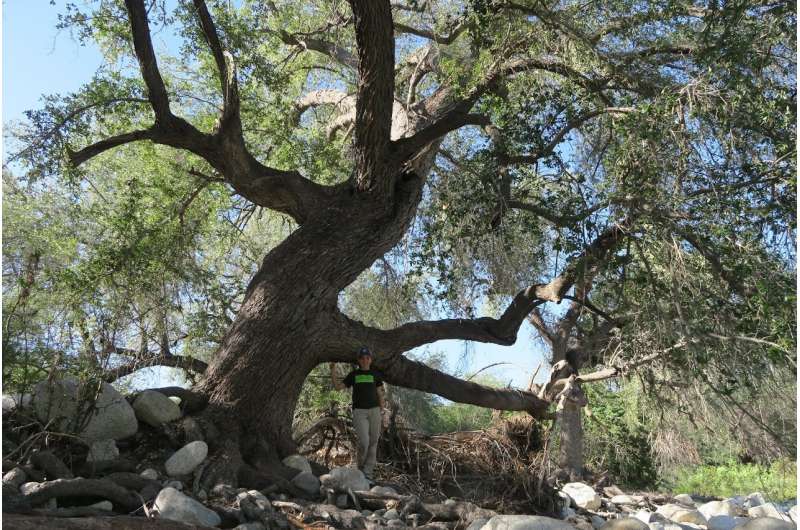Landmark global report: 1 in 3 tree species face extinction

One in three trees worldwide are facing extinction, with human use among the greatest threats, according to the first State of the World's Trees report published September 1 by Botanic Gardens Conservation International (BGCI).
According to the report, 30% (17,500) of the world's 60,000 tree species are currently at risk of extinction. That is twice the number of threatened mammals, birds, amphibians and reptiles combined. Of those, more than 440 species of trees are on the brink of extinction, meaning fewer than 50 individuals of those species remain in the wild.
The report marks a major milestone in the Global Tree Assessment (GTA) initiative, and is the result of five years of research among more than 60 institutions to identify major gaps in tree conservation efforts. The Morton Arboretum, BGCI-US, NatureServe and the United States Botanic Garden (USBG) collaborated to provide a major contribution to the global report by delivering the first-ever comprehensive assessments of all 841 native continental U.S. tree species. Nearly all U.S. tree assessments have been completed, revealing that an estimated 1 in 10 U.S. tree species are threatened with extinction. The full report on the conservation status of all U.S. trees will be available in early 2022.
"This assessment makes clear that the world's trees are in danger," said Gerard T. Donnelly, Ph.D., president and CEO of The Morton Arboretum. "As keystone species in forest ecosystems, trees support many other plants and living things that are also vanishing from the planet. Saving a tree species means saving much more than the trees themselves," he added.
The greatest threats facing trees, according to the report, are habitat loss from agriculture and grazing, followed by over-exploitation from logging and harvesting. Climate change and extreme weather are emerging threats to tree species globally, and many trees risk losing areas of suitable habitat, it concludes. This affects species in both temperate and tropical habitats, with cloud forest tree species of Central America being at particular risk.
At least 180 tree species are directly threatened by sea level rise and severe weather events. These threats are most severe to island species, including magnolias in the Caribbean.
The report finds hope for the future, however, as conservation efforts led by the botanical community worldwide are growing. At least 64% of all tree species can be found in at least one protected area, and about 30% are in botanical garden collections and seed banks. However, tree conservation researchers stress that further action is needed.
"We can't lose sight of the impact that botanical institutions can have through globally coordinated efforts," said Murphy Westwood, Ph.D., the Arboretum's vice president of science and conservation. "Conservationists have known that many tree species are threatened, but we now have a comprehensive roadmap for action with properly outlined priorities and a valuable tool for discussions with policymakers," she added.
The Arboretum has led or contributed to more than 1,000 tree assessments since 2015. This includes several landmark publications such as The Red List of Oaks 2020, the first comprehensive assessment of the world's oak species, which found that nearly one-third of all oaks are at risk of extinction. Previous reports also include The Red List of US Oaks in 2017 and The Red List of Fraxinus—the first comprehensive global assessment of ash trees, which first identified five North American ash species as critically endangered due to the emerald ash borer pest.
The collaborators plan to catalyze action among policymakers and conservation experts internationally. To aid action, BGCI is launching a new GlobalTree Portal, an online database tracking conservation efforts for trees at species, country and global levels.
Both the report and portal show for the first time which trees need the most protection, where action is needed most urgently and, most importantly, where the gaps in conservation efforts exist so that resources and expertise can be deployed most effectively.
However, Westwood noted that it's not just experts and politicians who can have an impact. "Saving trees is a global effort that requires local action," she stressed. "Individuals and community organizations can support the planting of native and threatened tree species through their local arboretum or botanical garden, or by simply planting the right tree in the right place, and giving it the right care so that it can thrive for many years to come."
The full State of the World's Trees report is available on The Morton Arboretum website.
Provided by The Morton Arboretum





















